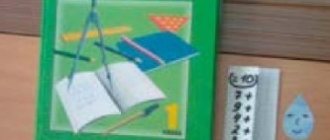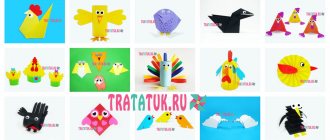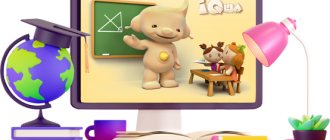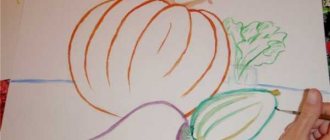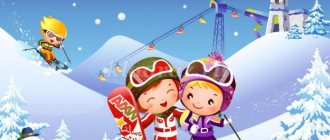What are Cuisenaire's rods?
The Cuisenaire technique is implemented in sticks, which are also called: counting sticks, numbers in color, colored sticks, colored rulers, Cuisenaire counting sticks.
Cuisenaire rods are 10 parallelipipids of different colors and sizes, made of wood or plastic. Their length ranges from 1 to 10 centimeters.
Cuisenaire sticks correspond to the designation of numbers: the longer the stick, the larger the number it represents. The shortest stick means a one, a stick twice as long means a two, and so on.
Sticks that are similar in color are grouped into families or classes. For example, a red stick represents 2, a brown stick represents 4, and a cherry stick represents 8: thus, all of the Cuisenaire sticks listed above can be classified as members of the family of numbers that are multiples of 2.
There are 5 families or classes in total:
You can make Cuisenaire sticks yourself: for this you will need colored cardboard and scissors. The smallest strip, responsible for the “unit,” measures 2 by 2 cm, all subsequent strips increase in length by 2 centimeters.
The tasks that can be performed with cardboard strips are quite limited - the flat version does not allow for the construction of three-dimensional figures. However, the cardboard version of Cuisenaire sticks is also popular and is suitable for getting acquainted with the technique.
Cuisenaire sticks can be stored in a separate bag or box, but it is best if it is a special box with compartments designed for each stick. In this case, upon completion of the lesson, the child will have to choose the right “house” for the multi-colored family and put all the sticks neatly.
Summary of GCD using Cuisenaire rods in the younger group of kindergarten. Count within 3
The use of fairy tales (fairy tale characters) in the development and education of children.
Summary of GCD using Cuisenaire sticks based on the fairy tale “The Three Bears” for children of the younger group of kindergarten. Description: This lesson based on the fairy tale “The Three Bears” using Cuisenaire sticks will contribute to the development of elementary mathematical concepts in preschoolers 3-4 years old (counting within 3, fixing the names of colors, distinguishing sizes). The material may be useful to kindergarten teachers, special education teachers, and parents. Goal : formation of elementary mathematical concepts in children with learning difficulties Objectives: - Develop curiosity and cognitive activity when getting acquainted with fairy tales - Develop children's speech, expand vocabulary - Strengthen counting skills within 3 - Strengthen the names of primary colors, sizes of objects. -Develop visual perception -Develop motor skills Equipment: printouts with tasks for children, pictures of 3 bears and Mashenka, Cuisenaire sticks, and sheets with tasks for them
Progress of the lesson: Teacher: In one magical forest there lived a family of bears. Bear - Papa - Mikhail Ivanovich - the largest bear, mother bear - Nastasya Petrovna - medium in size and the smallest bear - their son Mishutka. (We place pictures of three bears on the desk one by one)
Each of the bears lived in their own house. Papa Bear had the biggest house - like this, (We put a printout with task number one on the desk)
Let's build a house for a big bear from sticks (Children select suitable sticks and put them on the printout) What a beautiful house Mikhail Ivanovich has! The bear is big and so is the house... Children: Big! Teacher: Well done! Mom, Nastasya Petrovna, also had her own house - medium size (we post a printout of task number two)
Let's build a house for the mother bear! (children select suitable sticks) Teacher: What is the size of mother’s house? Children: Average! Teacher: Correct! And Mishutka also had his own house, since he was a small bear, his house was the smallest. (we post a printout with task number 3)
Let's build a house for Mishutka! (Children lay out suitable sticks) Teacher: Well, all the houses are ready, let's plant ours next to their houses. The big bear lives in... Children: Big house Teacher: Correct. (we plant the bear next to the house)
What color sticks were used to build the house? Children: blue! Teacher: Well done. Mother bear lives in... Children:: Middle house Teacher: Well done! (we plant the bear next to the house)
What sticks were used to build the house? Children: from the yellow ones! Teacher: That's right! And Mishutka lives in... Children: in a small house! Built from red sticks! Teacher: Well done!
Near each house there was a Christmas tree (we post pictures of three Christmas trees of different sizes).
Near the big house is the tallest Christmas tree. Near the middle house there is a lower Christmas tree, and near the small one it is the lowest. Let's plant the right Christmas trees next to each house (Children work independently, matching the appropriate size Christmas trees)
Teacher: What kind of Christmas tree grows near dad’s house? Children: Tall Teacher: Near mom’s? Children: Lower Teacher: Near Mishutkin? Children: Lowest Teacher: Correct. Each of the bears had a room with their favorite furniture in the house. In my dad’s house there was this big table and chair (we demonstrate task number 4)
Let's build stick furniture for the big bear. (Children work independently, selecting suitable sticks) Mikhail Ivanovich the bear loved to sit on his big chair (we put the bear on a chair) The mother bear also had her own room, where there was a middle table and a chair (we demonstrate task number 5).
Let's build some furniture for mom out of sticks. (Children work independently, choosing suitable sticks) Great! Mom also really loved her room, sitting on her chair (we put the bear on the chair). Mishutka also had her own room, where there was a small chair and a table (we demonstrate task number 6)
Let's build furniture for Mishutka. (Children work independently, choosing suitable sticks)
Teacher: Each bear had a favorite cup and plate (we show pictures of dishes of different sizes). Let's find the largest dish for dad. (Children select the largest cup and plate and place it on the table)
Teacher: Well done. What color is dad's dishes? Children: Orange Teacher: That's right. Mom had a medium plate and cup, let's find mom's dishes and put them on the table (Children work independently)
Teacher: Well done. What color is mom's dishes? Children: Blue. Teacher: Correct. Well, Mishutka had the smallest plate and cup, let’s put them on the table too. What color are they?
Children: Red. Teacher: Correct! Every day the bears went to the forest clearing to pick berries. Everyone had their own basket, dad had a large one, mom had a medium one, and Teddy Bear had a small one. And so they took baskets and went for berries. When they left, they never locked their houses, because no one lived in the forest except them. At this time, a little girl Mashenka was walking through the forest. (We show a picture or a small doll) She got lost, wandered along the forest paths for a long time, was very tired, and finally came out into the clearing to the bear’s houses. She entered the largest house and saw a room with furniture and a cup on the table. She was very thirsty, she took a cup from the table, but the cup was too heavy; the girl dropped it and the cup broke into small fragments. The girl got scared, ran out of the house and ran into Mishutkin’s little house. She sat down on a chair, but the chair was too small for Mashenka and it broke. The girl got scared, ran out of the house and ran into her mother’s middle house. There she sank weakly onto her mother’s chair and cried bitterly. Meanwhile, the bears collected berries and returned home. Everyone went into their own house. Dad saw that his favorite cup... was broken. Mishutka discovered that his favorite chair was broken. And the mother bear found Mashenka crying bitterly in her house. The bear Nastasya Petrovna called Mikhail Ivanovich and Mishutka and together they began to calm the girl down. Mashenka stopped crying and told them her story - how she got lost in the forest, was very tired, and suddenly saw houses. Mashenka explained that she didn’t want to break anything at all, she just wanted to drink and rest a little. The girl apologized to the bears and promised to fix everything. Let's help Mashenka glue her dad's cup and fix Mishutka's chair (We put a printout with cut-out pictures on the desk, the children assemble it themselves)
Teacher: The bears forgave Mashenka and did not become angry with her. They gave her delicious tea with berries, and then showed her the short way from the forest to the girl’s house. Mashenka thanked them and promised that she would never walk through the forest alone again, only with her mom and dad. This is the end of our fairy tale. Did you like the fairy tale? Children: Yes, I liked it! Teacher: Then finally, let's collect pictures with our heroes. (we put cut-out pictures of the characters on the desk, the children assemble them themselves)
We recommend watching:
GCD on FEMP in the second junior group Summary of organized educational activities on FEMP in the second junior group Synopsis of a frontal lesson on FEMP in the 2nd junior group GCD in mathematics in the 2nd junior group
Similar articles:
Math lesson notes. Theme: “One - many, big - small.” Second junior group
Math lesson notes. Topic: "Circle". Second junior group
Summary of a lesson on FEMP in kindergarten in the second junior group. Topic: “Spatial relations”
Summary of a lesson on FEMP in kindergarten in the second junior group. Triangles
Summary of lessons in kindergarten in the younger group. Topic: “Parts of the day”
